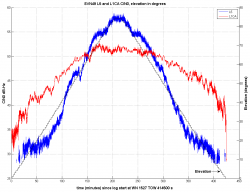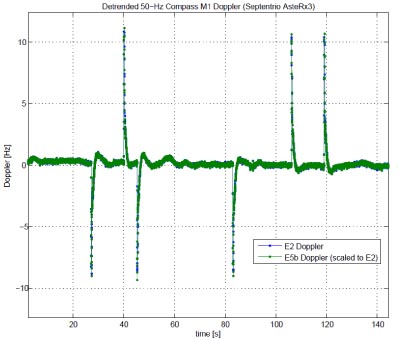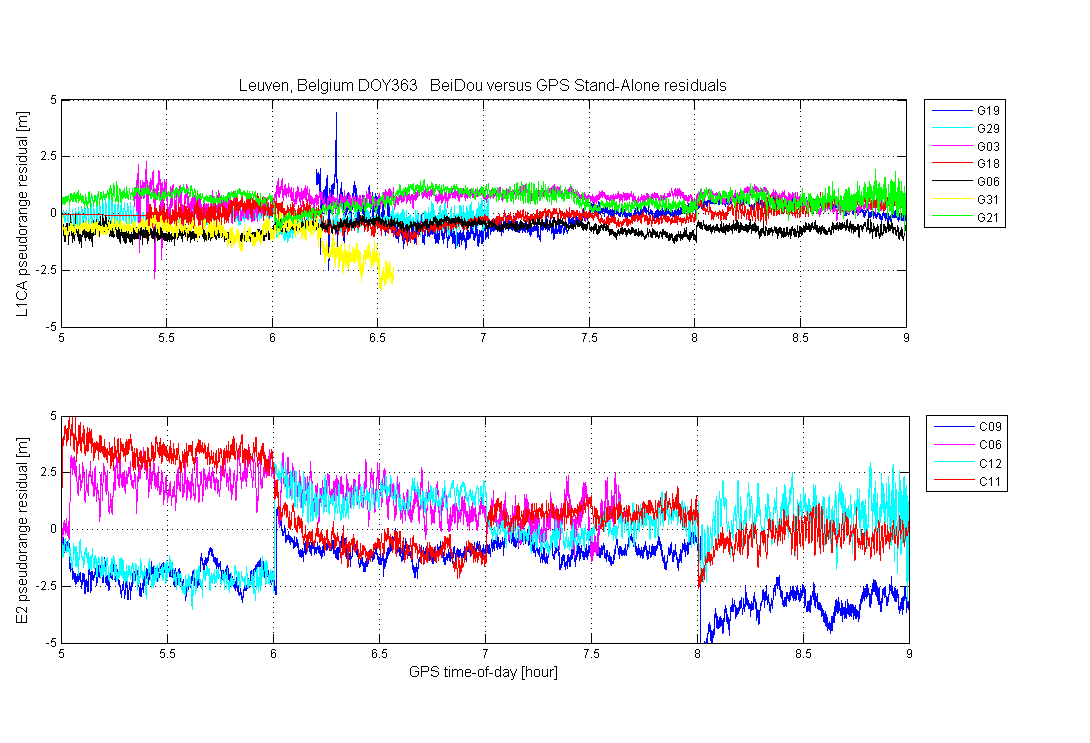 SVN49 L1 C/A (red) and L5 Signals. Septentrio image.
SVN49 L1 C/A (red) and L5 Signals. Septentrio image.Septentrio reports success in tracking five signals being transmitted from the modernized GPS Block IIR satellite with the L5 demonstration payload launched on March 24.
Now designated space vehicle number 49 (SVN49), the satellite began broadcasting in the L1 and L2 band on March 28, shortly after the spacecraft reached its quasi-circular middle earth sorbit.
Septentrio reports success in tracking five signals being transmitted from the modernized GPS Block IIR satellite with the L5 demonstration payload launched on March 24.
Now designated space vehicle number 49 (SVN49), the satellite began broadcasting in the L1 and L2 band on March 28, shortly after the spacecraft reached its quasi-circular middle earth sorbit.
Turn-on of the new civil L5 demonstration signal occurred on April 10. Septentrio engineers and researchers at Delft University of Technology, The Netherlands, have used the company’s PolaRx3G commercial off-the-shelf GNSS receiver to track L1-C/A, L1-(Y), L2-P(Y), L2C, and L5 signals from SVN49.
Hans van der Marel, assistant professor in the Department of Earth Observation and Space Systems (DEOS) at TU-Delft, says that he and colleagues had tracked a complete pass of SVN49, together with the two Galileo experimental satellites GIOVE-A and GIOVE-B, and are analyzing one of the first datasets including both GPS L5 and GIOVE-A/B.
“One of our first observations is that the power of the demonstration GPS L5 signals is even higher than expected when the satellite is in the zenithal direction, while the opposite is true at lower elevations,” said van der Marel.





